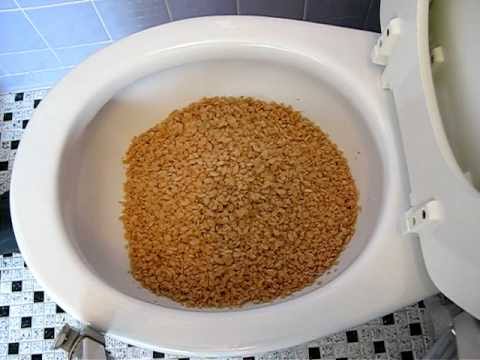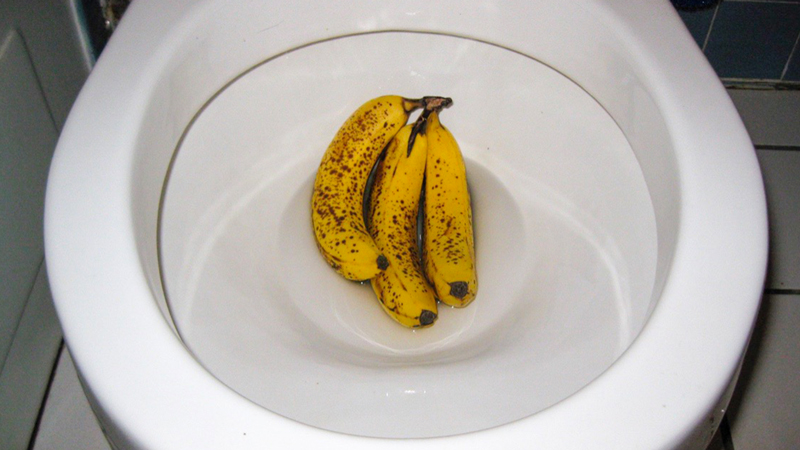Are You Allowed to Dispose of Food in the Toilet?
Are You Allowed to Dispose of Food in the Toilet?
Blog Article
In this article further down yow will discover a good deal of amazing ideas in regards to Think Twice Before Flushing Food Down Your Toilet.

Intro
Many people are typically confronted with the predicament of what to do with food waste, specifically when it pertains to leftovers or scraps. One typical inquiry that occurs is whether it's fine to purge food down the toilet. In this article, we'll delve into the reasons why people could think about flushing food, the effects of doing so, and alternative approaches for proper disposal.
Reasons why people may take into consideration flushing food
Lack of awareness
Some people might not know the prospective damage brought on by purging food down the toilet. They might wrongly believe that it's a safe practice.
Benefit
Flushing food down the bathroom may appear like a quick and easy remedy to throwing away undesirable scraps, specifically when there's no neighboring trash can readily available.
Idleness
In many cases, people might just pick to flush food out of sheer negligence, without considering the consequences of their actions.
Repercussions of flushing food down the bathroom
Ecological influence
Food waste that ends up in waterways can contribute to contamination and injury aquatic communities. In addition, the water used to flush food can strain water resources.
Pipes concerns
Purging food can cause clogged pipelines and drains pipes, triggering expensive plumbing repair services and troubles.
Sorts of food that ought to not be purged
Fibrous foods
Foods with coarse structures such as celery or corn husks can obtain entangled in pipes and trigger clogs.
Starchy foods
Starchy foods like pasta and rice can absorb water and swell, causing obstructions in pipes.
Oils and fats
Greasy foods like bacon or cooking oils need to never be purged down the toilet as they can strengthen and trigger clogs.
Proper disposal methods for food waste
Using a garbage disposal
For homes equipped with garbage disposals, food scraps can be ground up and purged through the pipes system. Nonetheless, not all foods appropriate for disposal in this manner.
Recycling
Particular food packaging products can be recycled, decreasing waste and reducing environmental influence.
Composting
Composting is an environment-friendly way to get rid of food waste. Organic products can be composted and used to improve soil for horticulture.
The importance of appropriate waste management
Minimizing environmental injury
Appropriate waste monitoring techniques, such as composting and recycling, aid minimize air pollution and maintain natural deposits for future generations.
Safeguarding plumbing systems
By preventing the technique of flushing food down the commode, property owners can protect against expensive plumbing repairs and keep the honesty of their pipes systems.
Conclusion
In conclusion, while it might be alluring to purge food down the commode for comfort, it is necessary to comprehend the potential repercussions of this action. By taking on correct waste management practices and taking care of food waste sensibly, individuals can contribute to much healthier pipes systems and a cleaner environment for all.
FLUSH FOOD DOWN THE TOILET?
FLUSHING FOOD CAN CAUSE BLOCKED DRAINS IN YOUR HOME
All of the plumbing fixtures in your home are connected to the same sewer pipe outside of your home. This outdoor sewer pipe is responsible for transporting all the wastewater from your home to the Council sewer mains. Even small pieces of food that go down the kitchen sink can cause problems for your sewer. It should therefore be obvious that flushing larger bits of food, such as meat, risks a clog in either the toilet itself or the sewer pipes. Flushing greasy food is even more problematic because oil coagulates when it cools, coating the interior lining of your pipes.
THE TOILET IS NOT A BIN
Food isn’t the only thing that people shouldn’t be flushing down the toilet. People use the toilet to dispose of all kinds of things such as tampons, makeup wipes, dental floss, kitty litter and even underwear. Water goes to great lengths to educate residents about the high costs and stress placed on wastewater treatment systems simply from people flushing the wrong stuff down the toilet. It costs taxpayers millions of dollars each year, and homeowners thousands in blocked drain repairs.
FLUSHING FOOD IS A WASTE OF WATER
Flushing food is a waste of our most precious resource - water. In June this year Level 1 water restrictions were introduced to protect water supply from drought conditions. Much of New South Wales continues to be affected by prolonged drought with recent figures revealing up to 97 per cent of the state remains in drought. Depending on whether you have a single or dual flush toilet, every single flush uses between five and 11 litres of water. In the current climate this is a huge amount of water to be wasting on flushing food that should be placed in the bin (or better yet, the compost).
https://www.jabplumbingsolutions.com.au/blog/can-you-flush-food-down-the-toilet

I was guided to that editorial about What Can Happen If You Flush Food Down the Toilet? from an acquaintance on another site. Make sure you take the time to distribute this blog if you enjoyed it. I appreciate your readership.
Click Here Report this page